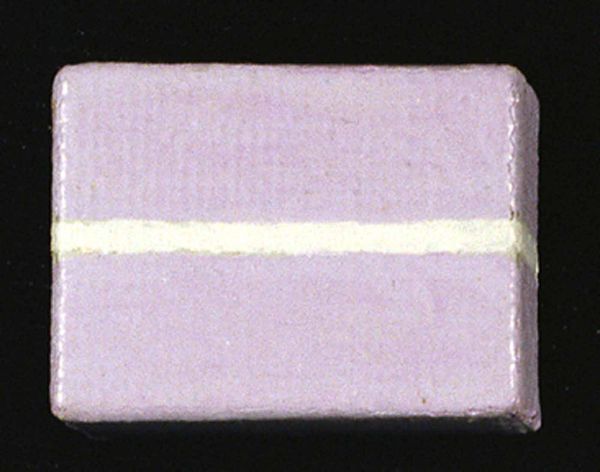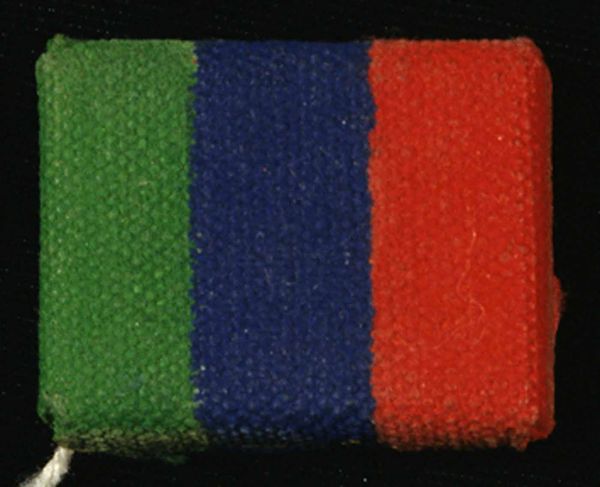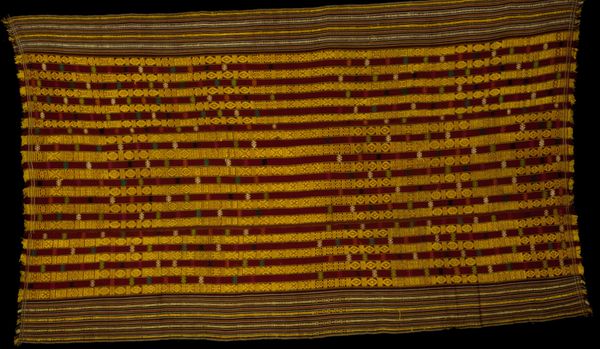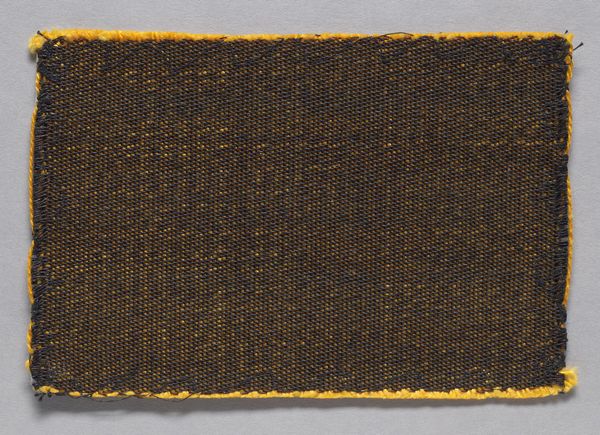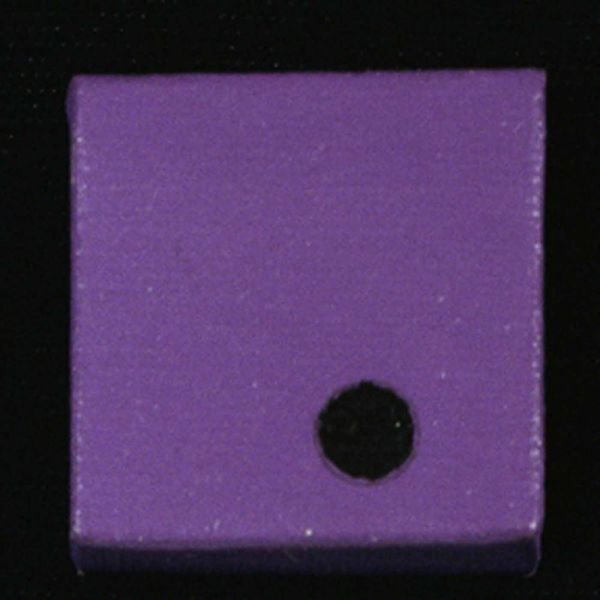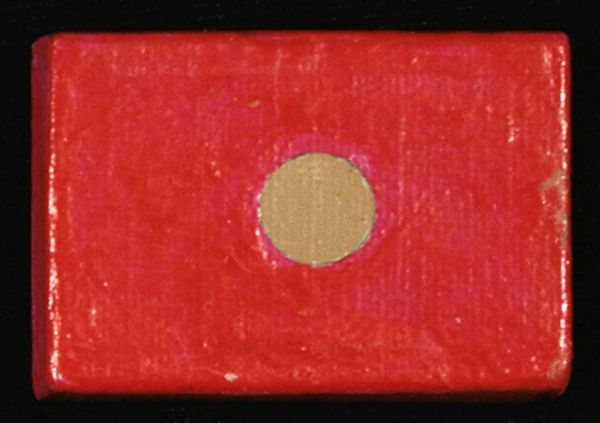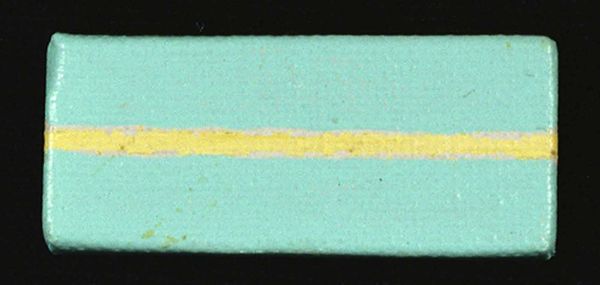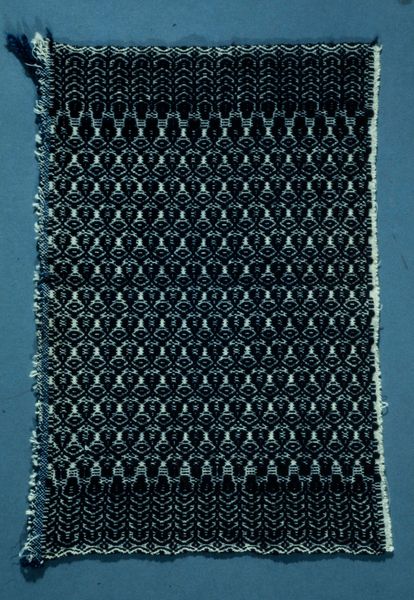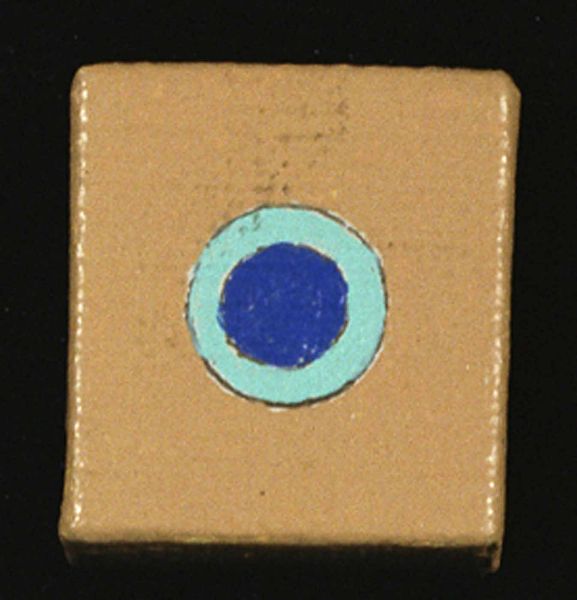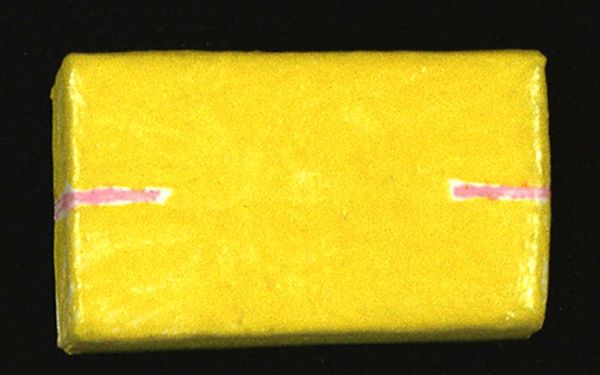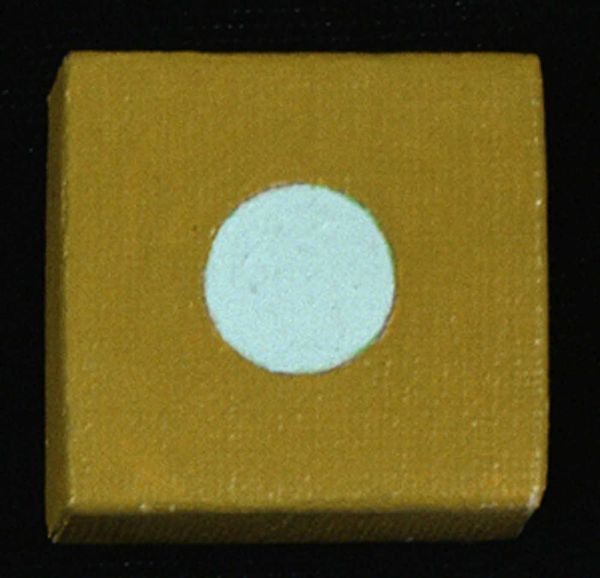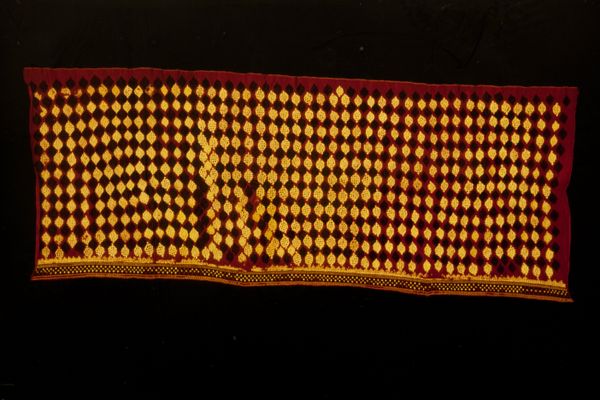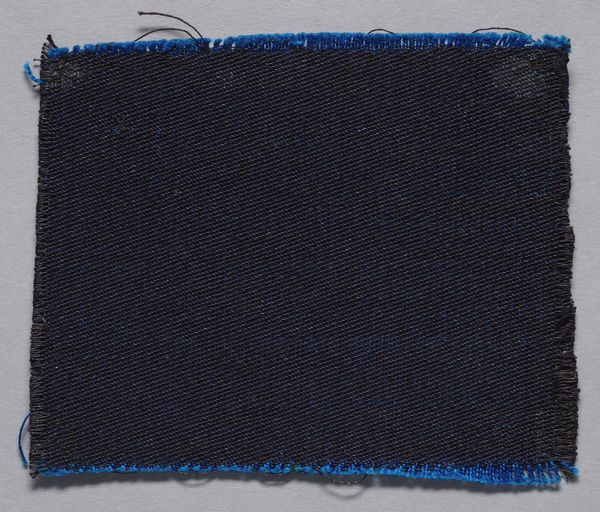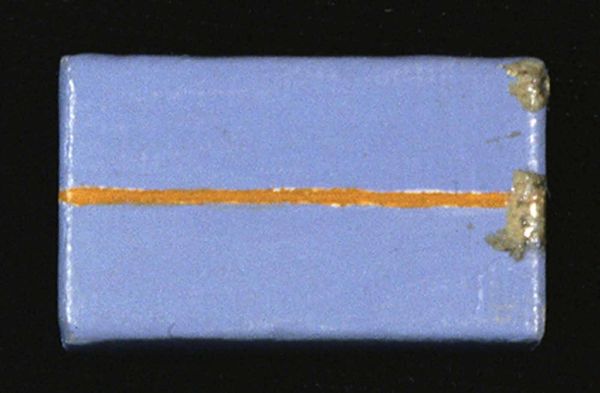
textile, acrylic-paint, impasto
#
abstract-expressionism
#
textile
#
colour-field-painting
#
acrylic-paint
#
impasto
#
abstract pattern
#
texture
#
orange
Copyright: Gene Davis,Fair Use
Curator: This is "Micro-Painting" by Gene Davis, created in 1968. Davis was deeply involved in Color Field painting and Abstract Expressionism. This particular piece employs acrylic paint on what appears to be textile. Editor: My first impression is one of unexpected intimacy. It feels… tactile. Like a tiny woven sunset. The impasto technique gives it this marvelous depth; it’s practically begging to be touched, even if that's a terrible idea in a museum! Curator: Indeed! It challenges traditional notions of painting by engaging the textile itself as a structural element, almost blurring the lines between painting and, say, fiber art. We should think about Davis' process here, especially concerning mass production and individual craft during that era. Editor: That's fascinating. Thinking about it now, it strikes me as an incredibly gutsy move for an Abstract Expressionist. There's a certain almost defiant simplicity at play. He reduces painting to these essential, emotional blocks of color but embeds it within a seemingly humble craft. The textural roughness softens what would otherwise be hard-edged geometric forms. Curator: Precisely. And within those blocks, we see a whole dialogue. Davis uses these almost deceptively simple bands of color – the orange, yellow, and subdued violet hue. We can see clear relationships of hue but think about also the kind of labour embedded here, consider where the textile may have originated and consider what it may have meant during that time to re-embed that craft form back within 'High Art'. Editor: This really makes me wonder if this was a statement about the disposable nature of so much mid-century design? He is pushing us to slow down, to really consider materials and the stories behind them. Even something this small feels, intentionally monumental now. Curator: A good point! Ultimately, what strikes me about "Micro-Painting" is the power it holds given its dimensions, an opportunity to think through its composition and social relations. It's this concentrated statement that makes us reassess materiality and modes of production in post-war America. Editor: Absolutely, and it also nudges us towards appreciating the extraordinary within the ordinary. That tiny patch is shouting volumes!
Comments
No comments
Be the first to comment and join the conversation on the ultimate creative platform.
